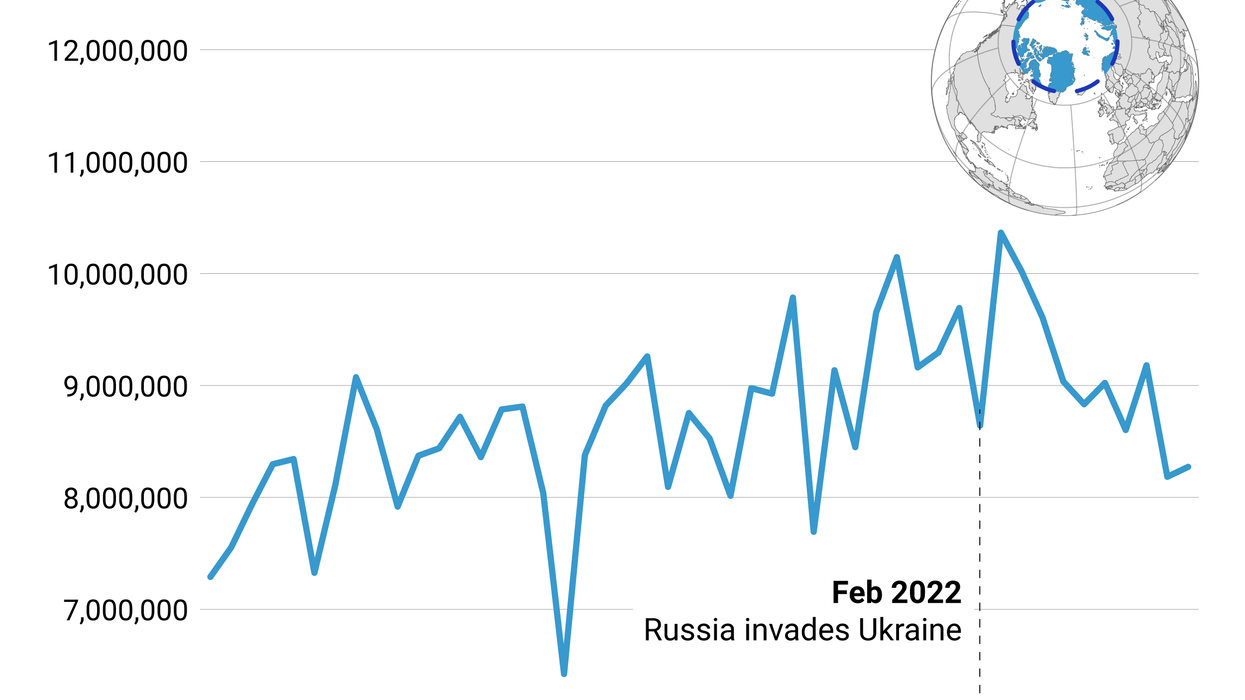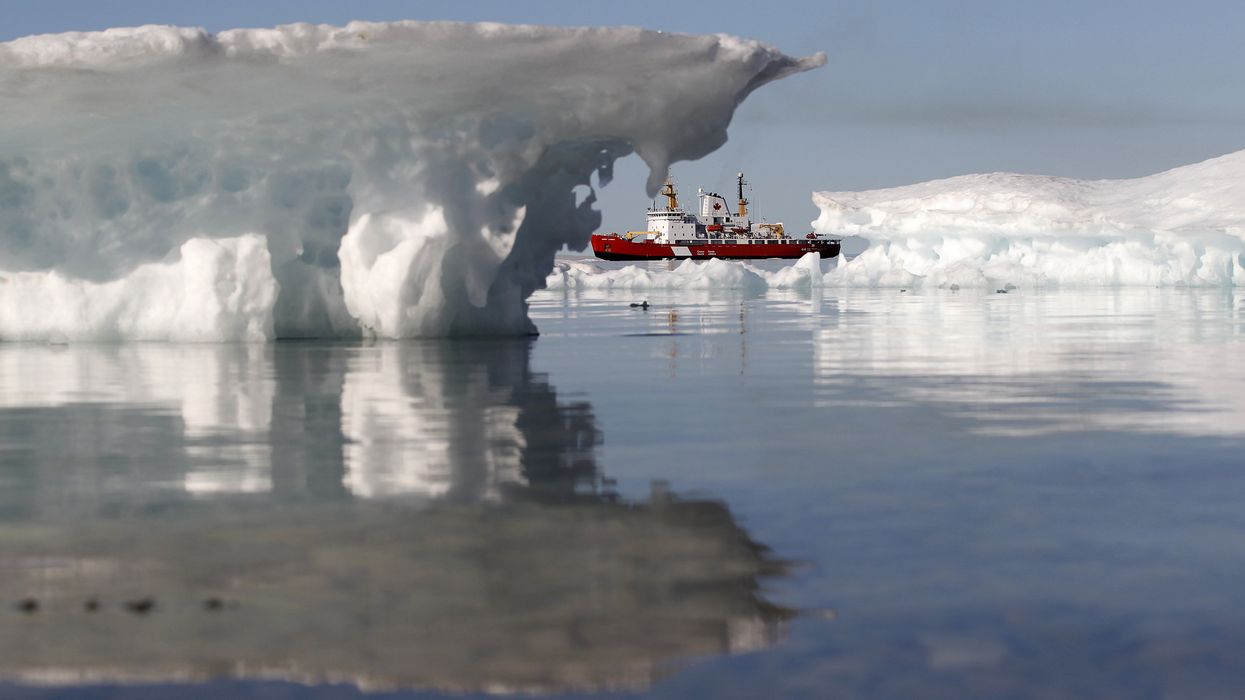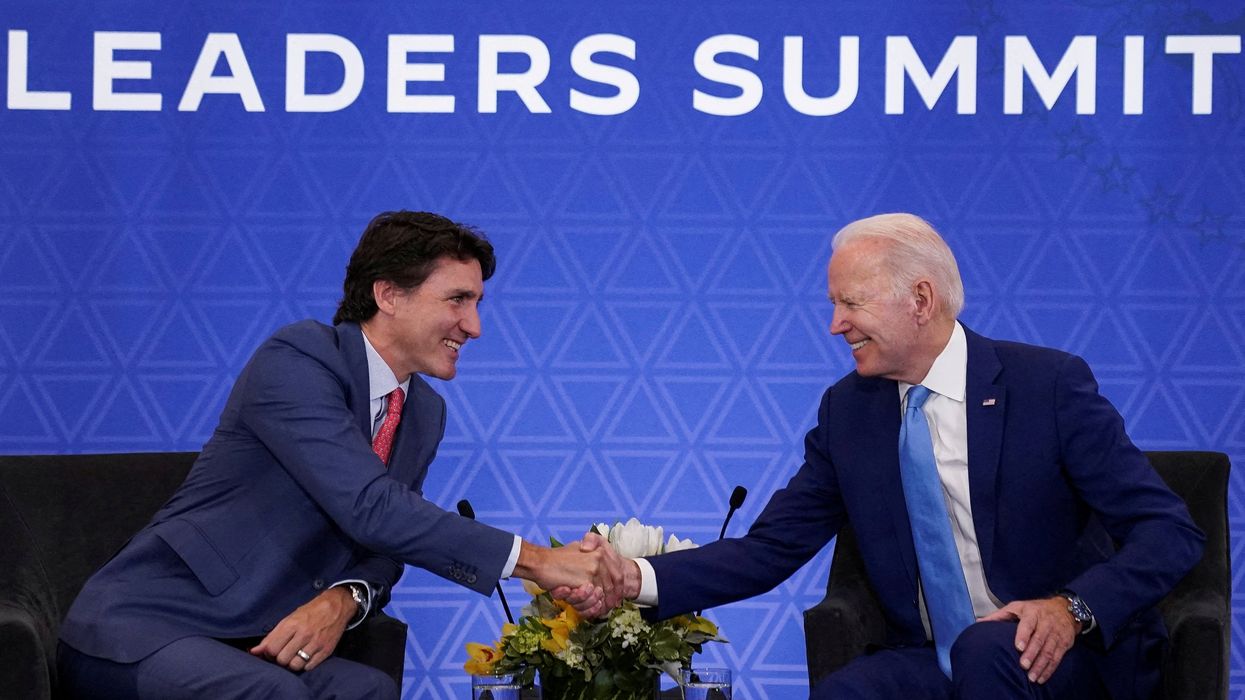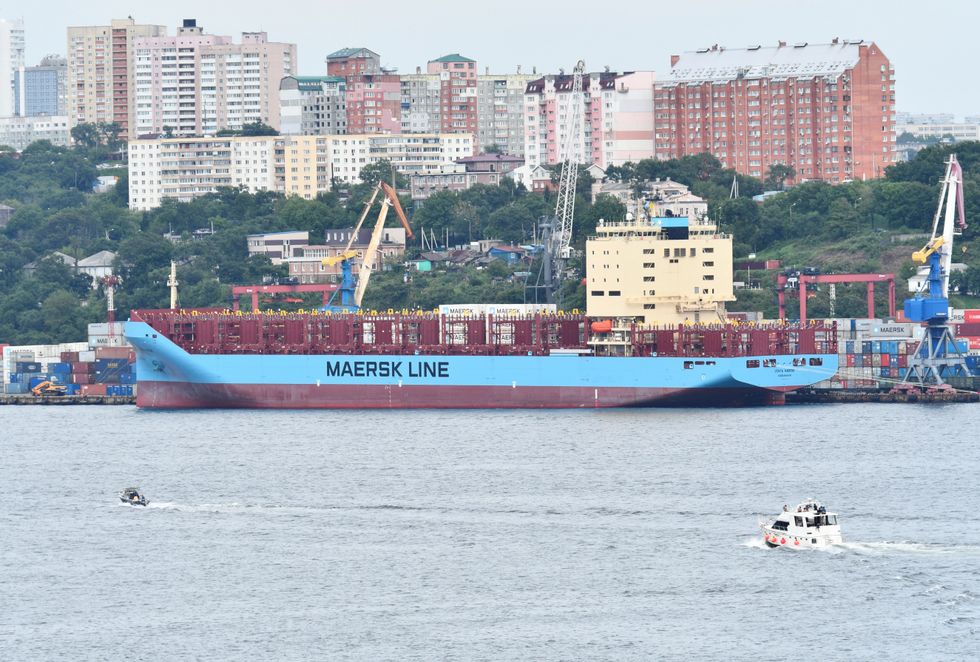GZERO North
The Graphic Truth: Shipping volume through the Russian Arctic
Climate change has opened Arctic shipping channels that can be navigated by freighters without icebreakers for several months a year – and year-round with icebreakers.
Oct 19, 2023




